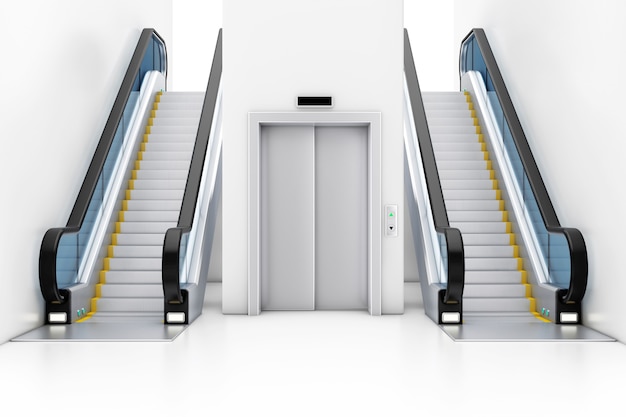We Maintain Lifts to the Highest Possible Requirements: Reliable Solution for All Lift Kind
We Maintain Lifts to the Highest Possible Requirements: Reliable Solution for All Lift Kind
Blog Article
Exploring the World of Lifts: Common Concerns Dealt With by Various Lift Devices
As we browse through the upright transportation systems of modern buildings, lifts stand out as an indispensable element of our everyday lives. From hydraulic lifts to traction systems and machine-room-less designs, each lift kind comes with its collection of usual issues.
Hydraulic Elevators
Hydraulic lifts, often liked for low-rise structures, make use of fluid pressure to regulate the activity of the elevator automobile (lift repair companies). This device involves a hydraulic pump pushing oil right into a cyndrical tube, causing the elevator to relocate in the wanted direction. While hydraulic elevators are recognized for their smooth and quiet procedure, they do come with their very own collection of typical problems
One common issue with hydraulic elevators is oil leakage. Additionally, issues with the control system, such as faulty shutoffs or a malfunctioning pump, can create interruptions in the elevator's movement.
Regular upkeep and punctual repair services are vital to make certain the smooth performance of hydraulic lifts. By resolving these usual problems proactively, building owners can minimize downtime and make certain the safety and security and performance of their upright transportation system.
Traction Lifts
When thinking about vertical transportation systems in structures, one more typical type apart from hydraulic elevators is the traction lift. Traction lifts operate using a system of ropes and weights that move the elevator auto by grasping onto the hoist ropes. This mechanism permits smoother and quicker upright transport compared to hydraulic systems.
Among the common concerns faced by grip elevators is rope wear. The consistent motion of the ropes within the grip system can cause damage gradually, potentially triggering the elevator to breakdown or become harmful for use. Normal evaluations and upkeep of the ropes are important to ensure the lift's proper performance and safety.
One more concern that traction lifts may come across is associated with the control system. Troubles with the control system can result in concerns such as irregular activity, hold-ups in reaction times, or also total shutdowns. Regular testing and maintenance of the control system are essential to avoid such issues and guarantee the lift's reliability.
Machine-Room-Less (MRL) Elevators

Among the crucial components of MRL lifts is the portable gearless grip device that is mounted within the hoistway. This equipment successfully drives the elevator automobile without the need for bulky tools located in standard traction elevators. In addition, MRL elevators typically make use of a weight system to balance the cars and truck, additional enhancing their power effectiveness.
In spite of their advantages, MRL elevators might deal with obstacles connected to maintenance and repair as a result of the confined room for devices installation. Accessibility for servicing parts within the shaft can be restricted, requiring specialized training for professionals. Proper upkeep routines and routine evaluations are crucial to make sure the ongoing smooth operation of MRL elevators.
Overloading and Weight Limitation Issues
Overloading and weight limit issues are critical concerns in elevator procedures. Lift makers style lifts with details weight capabilities to guarantee passenger safety and tools durability.
When elevators are overloaded, it places too much stress on the motor, cables, and various other parts, potentially causing malfunctions or malfunctions. If they spot excess weight, safety devices such as sensors and overload sensing units are in location to avoid lifts from moving. Additionally, going beyond weight limitations can lead to raised energy intake and deterioration on the elevator system.
To alleviate overloading concerns, developing managers must prominently display weight limitations in elevators and enlighten residents on the importance of sticking to these restrictions - lift repair companies. Routine maintenance checks by qualified technicians can likewise help make sure that lifts are operating within risk-free weight parameters. By resolving overloading and weight limit problems proactively, structure owners can boost elevator security and performance
Electric System Failings
Exceeding weight limitations in lifts can not only cause mechanical issues however additionally potentially add to electric system failures within the lift framework. Electrical system failings are a vital issue in lift operation, as they can cause unforeseen closures, breakdowns, or perhaps security threats. One typical electric issue is the getting too hot of parts because of too much existing flow triggered by overloading the lift past its capacity. This can result in damage to the circuitry, control, or motor systems, resulting in costly fixings and downtime.
Furthermore, power surges or fluctuations in the electric supply can additionally interrupt the elevator's procedure, influencing its lift companies in London efficiency and safety. These electrical disruptions can harm sensitive elevator parts such as control board, circuit card, or sensors, leading to system failings. Normal maintenance and evaluations are essential to identify and attend to prospective electrical issues without delay, making sure the effective and safe procedure of elevator systems. By sticking to weight additional reading limitations and conducting regular electric system checks, building proprietors can reduce the risk of electric failures in lifts.
Conclusion

Hydraulic elevators, usually liked for low-rise buildings, make use of fluid pressure to regulate the movement of the lift vehicle.When considering vertical transport systems in buildings, an additional typical kind aside from hydraulic lifts is the traction lift. Traction lifts operate making use of a system of ropes and counterweights that relocate the elevator cars and truck by gripping onto the hoist ropes. Unlike standard lifts that need a separate maker hop over to here room to house the devices, MRL lifts integrate many of the elements within the shaft, removing the need for a dedicated maker area.In conclusion, lifts face typical concerns such as hydraulic malfunctions, traction system failings, and electric system problems.
Report this page